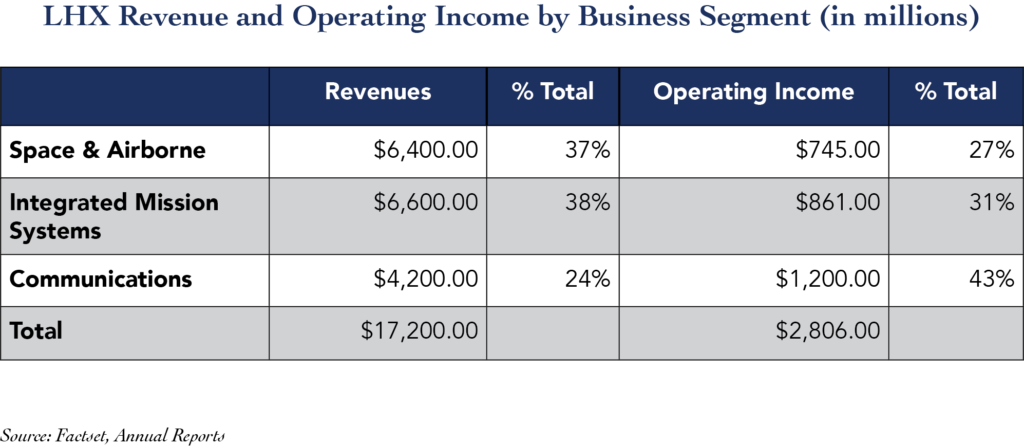L3 Harris Corporation (ticker: LHX)
By: Barb Rishel
Many consumers are familiar with the technological advancements and expertise of the L3 Harris Corporation. The company has its roots in both the entrepreneurial spirit of the Industrial Revolution and the earliest days of the space program. From its founding in 1890 as the inventor of the first printing press feeder in Niles, Ohio to its emergence as one of the top defense electronics contractors in the world today, LHX’s inventions are an integral part of our nation’s military capabilities.
History of Innovation
LHX began designing radar systems, telescopic lenses and antennas in the 1950s, which became the basis for tracking systems such as the Global Positioning Systems (GPS) that we know today. This technology was expanded to track weather patterns via satellites for NOAA (National Oceanic and Atmospheric Administration), and LHX antennas were used to broadcast the first international coverage of the 1964 Olympics. In the 1970s, L3 Harris began the first buildout of a secure communications network using fiber optic technology. This technology for secure communications systems via radio frequencies or spectrum is essential to our military and is still in use across the globe. One of their most recognizable products, seen in many war movies, is the “Manpack”—the radio pack that soldiers wear on their backs for mission critical communications from the ground to command centers.
LHX ‘s technologies are used in several applications in space—the final frontier. For example, LHX integrates components to form the optical telescope element for NASA’s James Webb telescope as part of the NASA/Northrup Grumman led team, which delivers unprecedented images of the universe’s first stars and galaxies. Some of LHX’s other patents and innovations have been utilized by the military for decades, including night vision googles, communications for the space shuttle, army radios and the “hotline” red phone connecting Washington, D.C. and Moscow.
L3 Harris Today
L3 Harris has the largest exposure to defense electronics in the industry and is a leader in communications, avionics, satellite systems and propulsion systems. The company has a product range stretching from military radios and classified space hardware to air traffic control systems. L3 Harris considers itself the “Trusted Disruptor” for the global aerospace and defense industry, delivering end-to-end technology solutions for space, land, air, sea and cyber domains. These efforts are led by 50,000 employees in over one hundred countries. Their motto is “Moving fast requires Trust, Moving forward requires Disruption.”
The two fastest growing areas of the 2023 Department of Defense (DoD) budget were for Space and Missiles, both up 20%, which are LHX’s two largest segments. Space, which includes satellites and antenna technology for both military and civilian use, is expected to grow in high single digits—faster than the overall budget. Aerojet Rocketdyne, a recent LHX acquisition, received a $200 million contract from the DoD. This represents a four-year backlog of revenues and supplies propulsion systems for Javelin, Patriot, Stinger and Terminal High Altitude Ares Defense (THAAD) missiles.
LHX’s second quarter (2023) results were above expectations. Full year guidance for 2023 was raised to $18 billion in revenues, an increase of 5-7% versus prior guidance which called for an increase of 2-4%. Earnings per share (EPS) increased from $12-$12.50 to $12.15-$12.55.
We believe LHX’s strong backlog will drive revenues higher going forward, especially with rising geopolitical tensions worldwide, notably in Ukraine and Israel. LHX is an attractive holding in your well-diversified portfolio.




